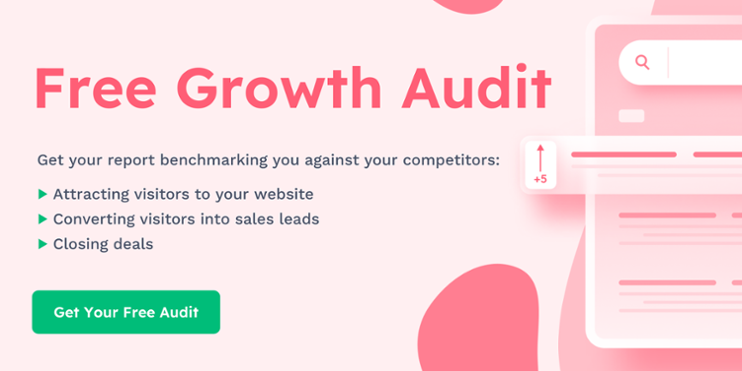The world of B2B SaaS is growing increasingly competitive. As access to knowledge and technology grow more readily available, it’s easier than ever for talented software developers to create game-changing solutions and bring them directly to the B2B market. That’s good news for you. It’s also good news for the other SaaS companies vying for the same customers.
Old staples like content marketing and good old fashioned outbound sales might be enough to take you on the first few steps towards profitable growth. If you have growth on your mind, however, you’ll need to build a bulletproof sales funnel that can effectively turn qualified leads into customers. In this post we’ll examine the 5 steps to building a reliable sales funnel that drives conversion rates while also ensuring that talented sales professionals use their time effectively.
Section 1:
Identify the right funnel stages
Establishing a user base is your number one priority — but for your recurring revenue business model to work, it’s essential that the majority of these customers are paying for your product. This means laying out a clear path to conversion for any sales lead, and it all starts with your sales funnel.
A good sales funnel is at the heart of any effective acquisitions process. And acquisitions are something you’ll have to master (as well as ensuring that existing customers don’t churn) in order to create sustainable growth.
While a sales funnel (and the name of each stage) may differ slightly at each business, below is an example of the stages you might want to implement.
Appointment/call scheduled
The widest part of the funnel. When leads are passed on from your marketing team, it’s important to establish whether the people you are engaged with are a good fit for your business and part of your target audience, and this is usually done through an introductory call.
Qualified to buy
At this point, the sales professional ascertains whether their business goals and operational needs are aligned with your product’s functionalities. If this is indeed the case, the lead is considered an SQL or Sales Qualified Lead.
Demos/Pitch
Having ascertained that your product is a good fit for the potential customer, the sales professional’s responsibility is to make sure that people know that. This might involve a 1 on 1 demos, or a pitch of the product’s value proposition to key decision-makers with supporting content. A good demo will align with a customer journey and provide a clear solution to a business problem.
Proposal/Trials
At this point proposal content and a contract prepared or the prospective customer undertakes trials. This may be a paid trial which allows them to see the product’s full suite of capabilities at an introductory price or a free trial with a reduced range of capabilities.
Article continues below.

Struggling to move leads through the funnel?
Let one of our growth experts analyse your current sales and marketing strategy, and we’ll lay out how you can:
– Attract visitors to your website with content
– Convert visitors into sales leads
– Close more leads into sales
Closed won
Now the prospect has a working understanding of the product and knows how well it is aligned with their needs. They’re happy and highly motivated to convert. Now it’s up to the sales professional to give them a nudge in the right direction, close the deal and turn that prospect into customers or users.
Closed lost
It would be an ideal world if every qualified lead we spoke to turned into a paying customer, but unfortunately, that doesn’t happen. Inevitably, there will be some prospects that decide your product is not for them and pursue other options, at this point, they become closed lost.
Section 2:
Choose a CRM that works for you
Of course, keeping track of all those leads can be a real chore for sales professionals, especially when your marketing team is constantly directing new leads towards them.
They need to be able to ascertain which leads have and have not yet been contacted and whereabouts they are in the pipeline. This makes for time efficiency for the sales professional and continuity for users. People generally don’t like to repeat themselves, especially busy B2B customers and particularly not to sales professionals.

Fortunately, there are a number of Customer Relationship Management (CRM) platforms to choose from which can help you to keep track of leads as they move through your funnel. These can help you to deliver superior customer service while also ensuring that sales professionals’ time is used efficiently.
Some of the Best CRMs for SaaS companies include:
- Salesforce – Arguably the world’s most famous CRM and scalable to small business or enterprise level.
- HubSpot – A marketing automation tool with good sales functionality – great for sales and marketing alignment.
- Pipedrive – Visually driven and user-friendly.
- Zoho CRM – Has a wealth of order management tools as well as social media integration.
- Zendesk Sell – Great for use on desktop or mobile devices for sales teams that are always on the go.
Section 3:
Determine the metrics to track
The ultimate metric for any sales team is closed deals and the revenue associated with it. However, to be a success there are a number of other metrics that are closely tied into the sales process. The core metrics that make an effective sales funnel are outlined below, but to truly excel you should also be using lead and lag indicators to analyse past performance and predict whether you’ll hit your future targets.
Revenue target
How much money do you need to make in this financial year? What do you need to make to remain profitable?
Average deal size
How much can you expect to make from the average closed won deal? It’s important to be realistic here. Overestimate this figure and it will throw all your other metrics out of alignment, as we’ll see shortly. If you’ve already got a customer base then you can calculate this metric.
Conversion rate
Of all the leads you generate, how many actually convert? If your conversion rates get untenably low, you might want to deploy some Conversion Rate Optimisation (CRO) strategies. Walking SEO encyclopedia Neil Patel has some useful insights on the subject of CRO here.
Number of leads needed
How many leads does your marketing team need to guide into the top end of your funnel for you to be able to hit your revenue targets by the end of the period?
Article continues below.
It should hopefully be clear how these metrics all fit together, and below is a basic example to highlight this.
So let’s say your annual revenue target is £500,000, and your average deal size is £50,000. You’ve looked at your conversion rates and you know that on average it takes 10 Sales Qualified Leads (SQL) to close 1 deal.
This means that in order to reach your £500,000 target, you’ll need to close 10 deals. In order for the sales team to get these 10 deals, the marketing department needs to generate 100 qualified leads. That works out at around 8 SQLs per month.
But how can sales teams actually make this happen?
Section 4:
Set goals for moving leads through the customer acquisition funnel
Once you’ve leveraged the right data it’s a case of setting targets that are likely to meet or exceed the numbers that you need to hit.
A little rudimentary maths should give you a rough idea of how many sales calls sales professionals will need to make, how many demos they’ll need to schedule, how many trials they’ll need to initiate and how many proposals they’ll need to send each week.

When teams and individuals alike can draw a clear line of delineation between their personal targets and the organisation’s goals, everyone can pull together to move leads through the funnel efficiently and get the acquisitions needed for the business to thrive.
Section 5:
Ensure sales and marketing are in alignment
There’s always a danger of individual teams working in a vacuum, watching their own metrics and KPIs without understanding how they impact other departments and the business as a whole. Teams need to understand how their KPIs are related and ensure that they are always in alignment.
This is especially true for sales and marketing teams. If sales teams know that they need 8 SQLs, marketing teams need to know what they have to do to generate them. It’s also important for sales teams to constantly be feeding back the quality of leads to the marketing department, to improve the overall quality of the sales funnel.
This is all completely possible to accomplish when both departments are in alignment and communicating regularly.
When you have an efficient SaaS sales funnel in place, it can be a powerful tool as you forge a path to business growth.



